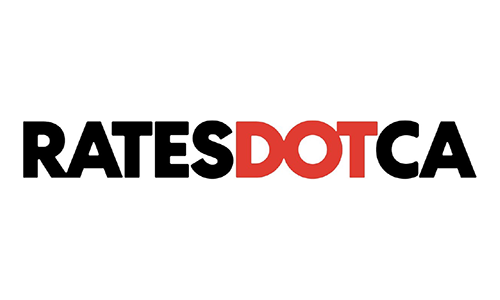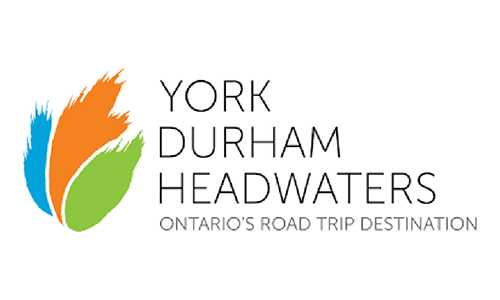Old stereotypes stunt Canadian women’s career growth
Canada is rightfully regarded as a progressive nation when it comes to gender equality in the workplace but certain stereotypes still prevail and it could be decades yet before the playing field is truly level.
Prof. Beatrix Dart, associate dean of executive degree programs at the Joseph L. Rotman School of Management, University of Toronto, grades Canada as being in the “middle of the road” on the subject.
“If I compare Canada to the most conservative countries, it’s certainly doing better than say Switzerland — which is my home country — but compared to the most progressive ones, namely the Scandinavian countries, there’s still a lot that can be done,” she tells Yahoo! Canada Finance. “Unless we tackle stereotypes and biases it’s hard to imagine how society will change. That’s probably the biggest challenge as cultural change takes a long time.” Continue reading HERE.
Top renovations you may want to rethink
Whether you’re thinking about selling or staying put, homeowners considering major renovation projects would be wise to devise a plan. Some renovations aren’t worth the hassle, investment dollars and can actually hurt your chances of selling your home in the future.
Indeed, beauty is in the eye of the beholder so if you’re thinking about a major overhaul to your home or property, do your homework first.
Frances Hinojosa, a mortgage expert at BMO Bank of Montreal in Toronto, says kitchen and bathrooms continue to be the best place to sink your renovation dollars, but she cautions home owners on curtailing renovations to fit their individual tastes.
“Of the value-busting renovations that people do it’s usually stuff that not everyone will find value in or it’s something that’s out of the ordinary,” she says. “Renovating the kitchen and bathrooms will see you get the most return on your money.” Continue reading HERE.
Digital assets becoming key in estate planning
Have you thought about what becomes of your online life after you’ve died? Of course you haven’t. But as our daily lives are increasingly spent online, there’s a growing concern to include one’s digital assets in estate plans or wills.
A recently released study on the subject by the BMO Retirement Institute suggests estate plans need to evolve to include the accumulation of our online properties. For instance, the report states 86 per cent of Canadian Baby Boomers use at least one financial online tool and they are actively involved in online areas such as finance, social networking and data collections including photographs and music. However, Canadians have not been addressing these in their estate plans.
“Identify, inventory and value your digital assets. This will minimize the burden on your attorney/executor as they may not be aware of the existence of these assets. Doing so will also minimize the risk of losing assets that may have both financial and sentimental value,” says Marlena Pospiech, senior manager, retirement planning strategy, BMO Financial Group. “The definition of value can be different for different people. Some digital assets have financial value while others have sentimental value. It may be difficult for individuals to value their digital assets particularly since this is such a new frontier in estate planning.” Continue reading HERE.
Is your aspiring scholar properly insured?
You may be rejoicing now that your kids are off to college or university, and not to put the fear of doom into you, but among all the preparations made was insurance considered?
If you haven’t done so, don’t panic, but get on the horn to your insurance provider and review your home insurance policy to ensure your aspiring scholar’s belongings are adequately covered for theft, loss or damage.
“It is frequently overlooked. Often times, parents are so busy getting the kids sent off that they don’t give a thought to (protecting expensive electronics),” remarks Anne Marie Thomas, an insurance expert at InsuranceHotline.com in Toronto.
Thomas is a self-described “insurance geek”. Before joining InsuranceHotline.com — Canada’s oldest online insurance rate comparison website — she worked for more than 25 years as a broker at various institutions.
“Parents should be contacting their insurance provider to find out what they’re covered for and to ask if liability and personal property that’s temporarily removed (from home) is covered while their child is at university,” she says. “Some policies will extend it while your child is away for up to $5,000 of personal property but some may not. It’s never to late to find out. The only time it’s too late to buy a policy is after something has already happened.” Continue reading HERE.
Workplace bullying: Time to tackle head on
Do you loathe going to work due to an abusive colleague or manager? Is the atmosphere at work stressing you out to the point that you’d just as soon quit your job than be bothered with confronting the issue head-on? If so, you’re not alone apparently.
According to the results of a newly released study by CareerBuilder.ca, 45 per cent of Canadian workers say they have felt bullied at work. One-third of these workers report suffering health-related problems as a result of bullying and 26 per cent decided to quit their jobs outright to escape the situation.
Mark Bania, managing director, CareerBuilder.ca in Toronto, says workplace bullying might not be a top-of-mind issue at a lot of Canadian companies but based on past U.S.-centric studies on this topic, it’s an important one for organizations on this side of the border to bear in mind. Particularly since if left unchecked, it can have a detrimental impact on a company’s productivity and overall morale.
“Workplace bullying is defined in a lot of different ways. It could be as simple as being ignored (49 per cent say they are), or using different standards and policies toward one employee over another (50 per cent), or being gossiped about (29 per cent),” he explains. “There’s a wide array of ways people feel bullied in the workplace. It boils down to their perception of what bullying is.” Continue reading HERE.
Why isn’t financial literacy taught in school?
If there’s one positive by-product of the 2008 financial crisis, it’s the heightened sense that Canadians need to take personal responsibility for their financial future.
And experts agree: Financial literacy is a critical tool — an essential life skill — that Canadian youth need to learn. But it’s a skill that is often learned too late. Canada’s student debt level has reached a staggering $15 billion, according to the Canadian Federation of Students, with the average student graduating with a debt load of $27,747, according to TD Canada Trust.
And while Canucks are taking their finances more seriously, consumer debt in this county has hit an eight-year high. And for those who have been diligent savers, longevity risk has complicated retirement plans, leading experts to call for annuity reform in the face of record-high levels of bankruptcy among seniors. Continue reading HERE.
Annuity reform needed as Boomers retire: study
Perhaps building up a comfortable retirement has always been a tricky balancing act. But as the Baby Boomer generation inches towards the so-called golden years, determining how much cash one needs to live on in the short-term and how to make savings last for an unknown period of time, is fuelling the need for an effective annuity market with a diverse product range.
According to a newly released report by the C.D. Howe Institute, retiring baby boomers are driving a shift from retirement-fund accumulation to decumulation [sic]. Continue reading HERE.
Mortgage debt: kill it or keep it?
With recent changes to Canadian mortgage rules and ultra-low interest rates continuing for the foreseeable future, the temptation to pay less on one’s mortgage and invest more elsewhere must be powerful to say the least.
But it’s always wise to look before you leap. Ask yourself, what are the pros and cons of paying down mortgage debt quickly versus taking a slower approach and using the excess cash for other investments?
Bob Stammers, director of investor education at the CFA Institute in New York City, says the question facing mortgage holders is the same one facing investors: How to bridge your need for return against your need for security? Continue reading HERE.
Food price hikes: what items will be expensive in 2013
To the consternation of just about everyone, global food prices are steadily rising due to a myriad of factors including a U.S. drought that’s reportedly becoming one of the worst in American history, comparable to the devastating Dust Bowl of the 1930s.
For Canadians, that means we can expect to start paying higher prices for food in the coming months including some staple items many of us may take for granted. CIBC notes in a recently release report the impact of the drought has already hit corn and soybean yields and it’s also pushing wheat and barley prices higher (beer drinkers everywhere just got nervous). And a spike in food prices will have a ripple effect on other parts of the economy, that bank’s chief economist says. Continue reading HERE.
Canadian companies fail to keep employees engaged
Is your workplace enthusiasm diminishing? Canadian companies are risking lower productivity and higher inefficiency due to a disengaged workforce, finds a recent study on the subject. If there was ever a wake-up call for Canadian employers, this might be it. Continue reading here.
Bankruptcy among Canadian seniors rising at an alarming rate
Arguably, few things could be as nerve-wracking as being retired or inching towards it and finding yourself in dire financial straits. But that’s what’s increasingly happening in Canada and younger generations would do well to take note so as to avoid finding themselves in the same position over time. Continue reading here.
Canuck investors bullish on Canadian investment opportunities
The global economy continues to wane, prospects for growth seem bleak, and financial markets are seemingly in a constant state of flux. But apparently the average Canadian investor sees it all through rose-coloured glasses and the bulls among us will tell you there’s no better time to invest. Continue reading here.
Young pros: Think twice about an RRSP
Young Turks take note: you too need to consider your financial health now in order to avoid potential catastrophes further down the line. The good news is time is on your side. But what you do with that fleeting advantage will largely determine how your finances fare in the decades ahead. Continue reading here.
Victoria Grant video on Canadian banking goes viral
It’s rather remarkable that a 12-year-old girl has taken it upon herself to lay a verbal beating on the state of Canadian banking but that’s exactly what Victoria Grant has done and in a most convincing fashion. Continue reading here.
Travel medical insurance: don’t leave home without it
Whether you’re planning to travel abroad on vacation or even to take a road trip to visit a neighbouring province, be sure to include travel medical insurance on your ‘must-have’ list. Continue reading here.
Rent vs. buy? It comes down to debt management
There’s good debt and bad. For first-time homebuyers, knowing the difference between the two and how to manage debt wisely is a critical step towards owning a home. Continue reading here.
How to get a bursary or scholarship
Students, there’s free money to be had to help fund your education but you have to make the effort to apply for the funds in order to get it. Continue reading here.
Federal budget 2012: A $5.2 billion chop
It was federal Finance Minster Jim Flaherty’s first true opportunity to wield the axe with the strength of a majority government behind him and he did so to the tune of $5.2 billion on Thursday, cutting more than 19,000 civil servant jobs over the next three years, raising the age to qualify for Old Age Security (OAS) from 65 to 67, and eliminating the hapless penny. Continue reading here.
Ontario budget 2012: Slay $15B deficit in five years
Ontario has essentially become a have-not province and the 2012 provincial budget introduced Tuesday is designed with that fiscal reality in mind. As it is, Ontario’s minority Liberal government is proposing a freeze on both public sector wages and corporate tax cuts to help the province dig out from underneath its weighty $15.3 billion deficit. Continue reading here.
CMHC, federal government not at odds over heated housing market
Last week, amidst the latest mortgage wars being waged byCanada’s big banks, it was suggested the Canada Mortgage and Housing Corp. (CMHC) would make moves to cool this country’s heated housing sector. As it turns out, that’s not exactly the case. Continue reading here.
Gas prices across Canada to rise in Spring spike
Have we ever known gas prices to plummet instead of spiking? The cost of gasoline in Canada continues to rise, helping to propel overall inflation in this country, recent figures from Statistics Canada suggest. Continue reading here.
Moncton: Canada’s most cost-competitive city?
Can you guess which Canadian city is considered the most competitive in the land for business? If you said ‘Moncton’, congratulate yourself. Continue reading here.
Canadians pay $185 a year in banking fees, among world’s highest
It’s been said that through chequing account banking fees Canadians are being taken to the cleaners annually. In fact, it’s more like to the tune of about $185 per year but that’s still $185 that could be put to better use arguably. Continue reading here.







